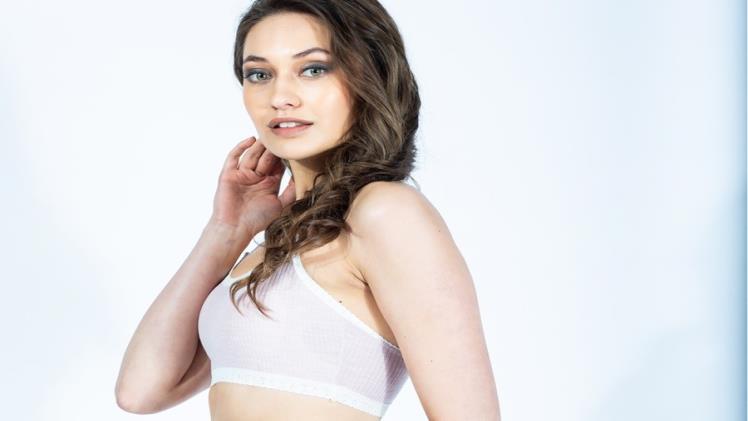The fabric you choose to sew your bra will directly impact its comfort and support. Whether you’re making a basic cotton bra or a slinky silk one, the right fabric will make all the difference.
There are several different fabrics used to construct a bra, including a stabilizing material (polyester warp knitted non-stretch fabric for bridge and center front); stretchy fabrics for cups, straps and band; power net or power mesh, and jersey knit for the bands.
Duplex
This strong and supportive reversible low-stretch fabric is perfect for bra cups without lining them. It has little mechanical give in the lengthwise direction and is very soft to the touch. It is also lightweight and comes in a variety of colors.
Typically, beginner bra makers use duplexes to get a feel for the process before working with lining and decorative elements. It is easy to work with, and you can add lace, ruffles or any other design element. Just be sure to test the combination of the bra fabric during the muslin process.
The most important thing when choosing cup fabric is that it is thin, smooth and strong. You don’t want the fabric to move around under your clothing. If you are unhappy with the elasticity of your material, there are many ways to manipulate it, such as lining it or fusible interfacing.
Tricot
Tricot fabric (pronounced tricoter) refers to a specific warp-based knit known for its stretch, breathability and shape stability. It’s typically produced on a flat knitting machine and features a smooth surface on the face and a textured back. The zigzag pattern that runs the length of the fabric gives it its distinct consistency and feel. The textile can be made with either natural or synthetic fibers, though the entirely artificial kind is favored for its versatility and stretch. It’s breathable, heat-retentive, water-absorbent, quick-drying and antibacterial. It’s also form-fitting and doesn’t build static electricity.
Lingerie and sleepwear are the best-known uses for Tricot fabrics, but they can also be used to make jackets and pants. It’s also often combined with Spandex to achieve a 2-way or 4-way stretch, making it suitable for sportswear. The fabric is very durable and comes in various deniers, from heavy 40 denier to lighter 15 denier options.
Stretch Spandex
Stretchy fabrics like Spandex can be stretched much and return to their original shape. This is what makes them a very convenient material for making bras.
When selecting this type of material, look at the spandex percentage. The higher the number, the more elastane in the fabric, resulting in a better and longer-lasting stretch.
Another benefit of this material is its durability and resistance to oils, lotions, detergents, sweat and damage from sewing. Stretchy fabrics can also be easily cleaned and maintained, making them a great choice for sportswear.
Spandex is used extensively in producing performance costumes for figure skating and dance. It is also a popular material for body-fitting clothes, including yoga pants and leggings. Power mesh polyester spandex is a good choice for creating leggings because it is breathable and provides support and comfort when working out.
Power Net/Power Mesh
Power mesh is a soft, sheer netting that can be lined with a heavier fabric to give your bra extra support. It’s famous for its compression capabilities, helping to contour your figure and hide any lumpy bits. This fabric is also breathable, so it’s great for hot weather and sportswear.
You can buy power mesh by the yard or in a kit, which includes the pattern and all the materials you need to make your project. It’s also available in metallic options that look like the chain mail medieval knights used to wear.
The weight of the power mesh and its density will determine what kind of garment it can be made into. A lightweight option is great for lining waistbands on activewear, while a heavier power net can be made into bras or control wear like girdles. The lighter-weight mesh has smaller holes and is less densely knit, so it’s softer on the skin. The heavier option has larger holes and is more densely knit, so it’s firmer and less stretchy.
Jersey Knit
The softness, absorbency and elasticity of jersey fabric make it the ideal choice for undergarments and clothing that sits close to your skin. It’s also a great fabric for sportswear and athleisure. Its stretch factor is often increased by adding Spandex or elastane to it.
This versatile knit fabric comes in many colors and shades – from deep mint green, teal blue, and light mauve pink to classic navy or beige. It is available in natural (cotton, wool) and synthetic fibers. It is also wrinkle-resistant and has good elasticity due to its fundamental composition.
You can easily sew jersey fabric into dresses, skirts, tops, sweaters and cardigans. However, you must carefully use the right needle size when sewing it because this knitted fabric is stretchy. Using ballpoint needles with slightly blunter tips than standard sewing needles is best to prevent ripping the knitted fibers.


